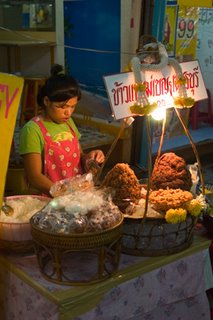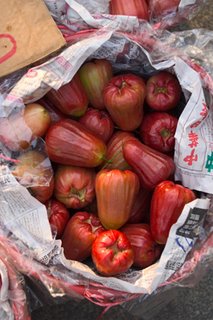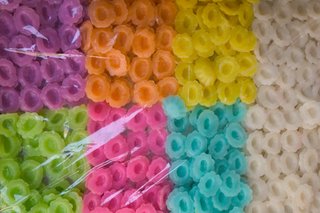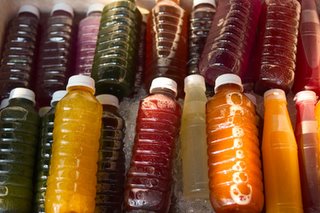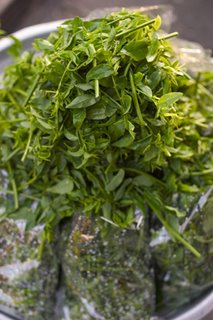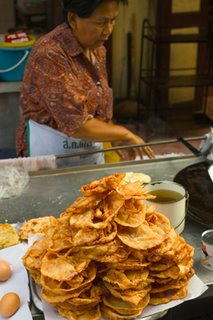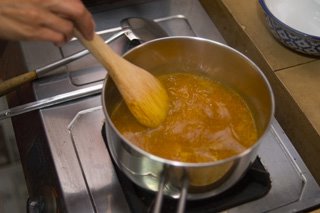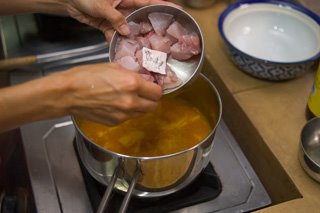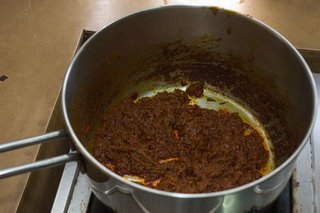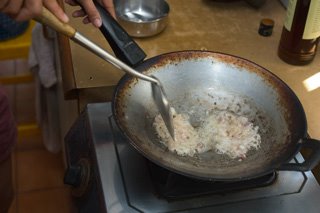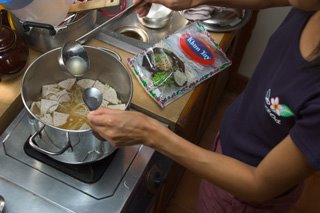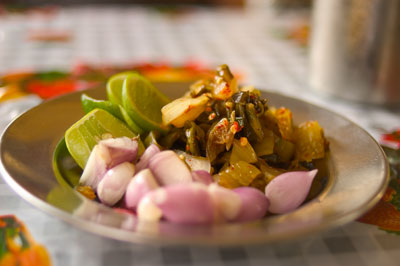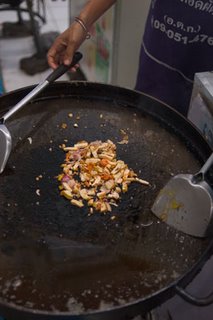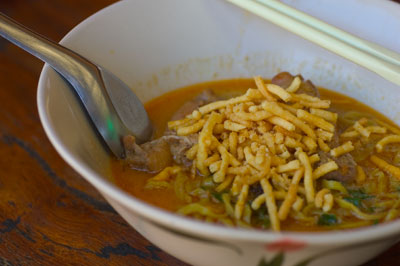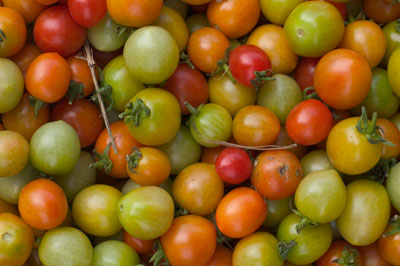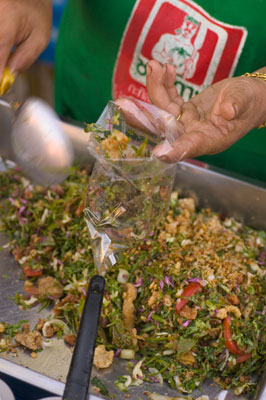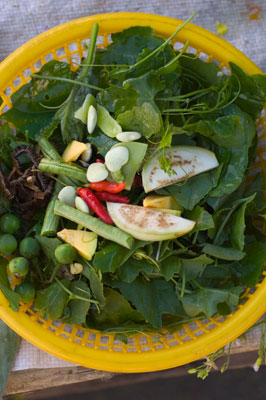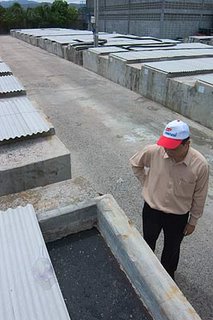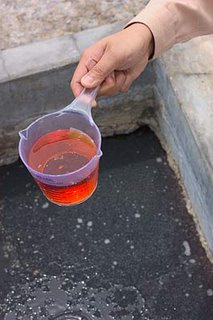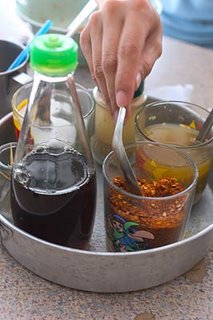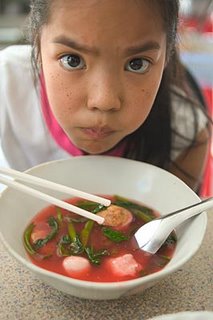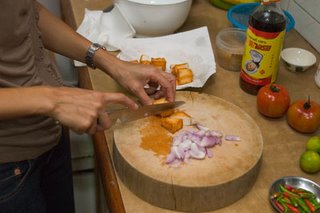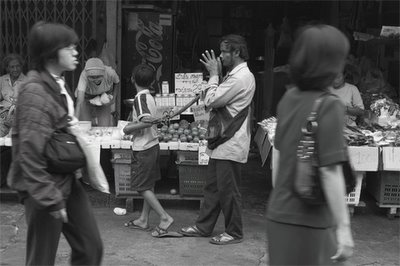Today's lesson revolves around two southern Thai dishes, specifically those using khamin, turmeric. This bright orange root, as I've said about 64 times already, is an incredibly popular ingredient in southern Thai cooking, and it is what tends to give these dishes orange/yellow hue. Today's recipes use the stuff both in dried form and fresh; essentially two completely different ingredients. The first, plaa thot khamin, fish fried with tumeric, uses powdered turmeric largely to counter any unpleasant "fishy" smells, and to give the dish an attractive yellow/orange color. The second recipe, plaa krabok tom khamin, mullet in a turmeric broth, uses a generous amount of the fresh stuff to provide a wonderfully acidic/fragrant/sweet flavor to the broth.
For the turmeric fried fish I'm using plaa saay daeng, this fish:
but plaa insee, Spanish mackerel fillets are also common, and very good.
Take about 1/4 cup of garlic (preferably small cloves with a thin peel--don't worry about removing every last bit of peel--you'll soon see why) and smash it up real violent like using a mortar and pestle: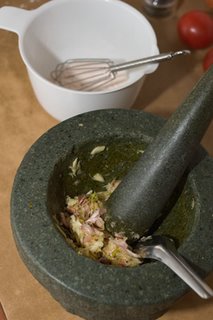
Next, take about an 1/8 cup of rice flour, an 1/8 cup of all-purpose flour, a teaspoon of turmeric power and a teaspoon of salt and mix this up with the garlic in a bowl.
Coat the scaled and gutted fish with this mixture and set aside for 10 minutes: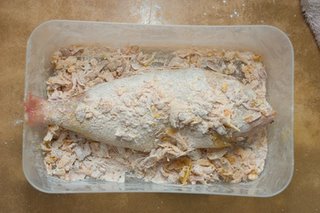
After the 10 minutes, shake off the excess garlic/flour mixture, reserving all of it (there should be a lot), and fry the fish on both sides in plenty of oil over a medium-high flame:
When the fish is cooked, crispy and yellow, remove and allow to drain. Now put all of the reserved garlic/flour mixture in the same oil and cook until crispy. Ladle this cripy gold over the fish, and serve: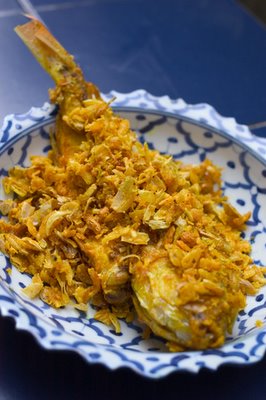
Now, for the mullet (heheh...) in turmeric broth, take a couple small cleaned and gutted mullets:
and chop their heads off. You could even chop the bodies into long-ish bits (as I did) if you prefer.
Bring about three cups of water to a boil. In meantime prepare your broth flavoring ingredients, a couple stalks of lemongrass, some peeled shallots, peeled turmeric and chilies: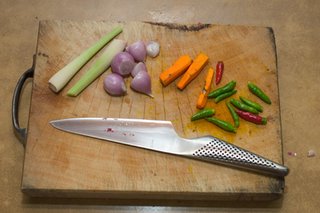
Using a pestle or the head of a your nearest loved one, generously bruise two stalks of lemongrass
the shallots and chilies (this helps the flavors to release more easily), and throw all of this into the broth and simmer until the broth is yellow and fragrant, about 2-3 minutes: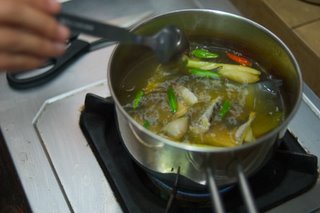
Add your mullet (hehehe...) and bring to a gentle boil. Add a few torn kaffir lime leaves. Flavor to taste with fish sauce and lime: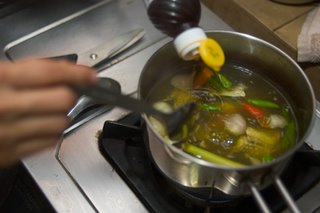
You is done: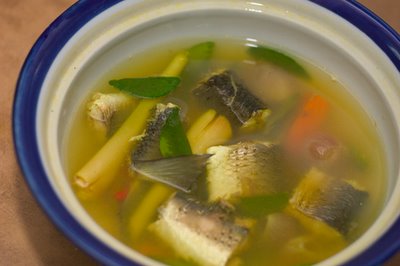
(My apologies for the less-than-stellar last pic, it was getting dark and I was hungry!)













